The 30-Second Review
The best robot vacuums can take care of basic cleaning with minimal human intervention. We tracked down reliable bots for every home and budget, from simple robots that dust hardwood to mightier models capable of pulling pet hair out of thick rugs. Then we put them to the test to see which ones could pick up dirt while navigating an obstacle course of furniture.
Best Overall
For general cleaning, the Roomba 690 offers impressive power for hundreds less than the competition. Just as impressively, it managed to clean our floors without getting completely stuck. Selling for $375, the 690 is a substantial upgrade from low-cost bots that go easy on dirt. It even holds its own against higher-tech and higher-powered models like the Samsung Powerbot.
Best Upgrade
For maximum cleaning power and intelligent, multi-room navigation, nothing beat the Roomba 960 in our testing. A relentless cleaner, the 960 leaves the same tracks as a manual vacuum cleaner, and even skirts around furniture and other obstacles in a human-like fashion. At just under $700, this top-of-the-line bot outperforms other super-deluxe models asking $1,000.
The Best Robot Vacuums
Whether you’re replacing an early generation robot vacuum or looking to purchase your first, it’s easy to feel overwhelmed by the abundance of options and prices, ranging from fairly cheap to fairly steep. Though you can find robovacs for $200 and less, we don’t recommend buying them. In addition to weak suction and ineffective brushes, the scatter-shot navigation of cheap bots will leave whole swaths of your floor completely untouched.
We found that well-functioning robovacs start around $300. And while deluxe models can climb all the way up to $1,000, a superbly powerful bot can be yours for $700. Our favorites represent the best functioning, most reliable bots at both ends of that price range. And they both happen to be Roomba — after all our testing, the competition just didn’t stack up.
For the average home, looking for help picking up everyday messes but willing to still run a manual vacuum once in awhile, we recommend the iRobot Roomba 690. You get a fully equipped Roomba — with iRobot HOME app control, Amazon Alexa compatibility, intelligent navigation, and accelerated cleaning power — for a little less than $400. It easily outperformed other, more expensive options thanks to its cleaning power and learning abilities — gathering more debris than most high-end robovacs and managing to wiggle its way out of trouble whenever it got stuck.
If you want the best money can buy, the iRobot Roomba 960 is a truly superior bot andcosts several hundred dollars less than other comparable models. Second-generation learning and navigation skills enable it to intelligently clean an entire level of your home, pausing to recharge as needed and then picking up where it left off. The Roomba 960 collected more debris than any robot vacuum we tested, and its refined sensors allowed it to tackle concentrated messes. Both the 690 and 960 boast tangle-free rubber brushes that help cut down on human maintenance time.
Because we were so impressed with the technology powering Roombas in this review, we decided to dedicate a whole review just to them. For a full run-down on the high-tech and tech-lite models made by the reigning champ of robovacs, check out our review of The Best Roomba Vacuum.
How We Found the Best Robot Vacuums
We started by compiling a list of 55 robot vacuums from top manufacturers: Bissell, bObsweep, Dyson, Ecovacs, Eufy, iClebo, iLife, iRobot, LG, Neato, and Samsung. While the bots produced by these companies claim many similar features, product data and customer feedback reveals wide differences in quality. Some bots can only be described as dinky, plastic discs, relying on suction alone for their unimpressive cleaning power. Other models are truly state-of-the-art, with improved brush design, battery power, and navigation algorithms.
We decided to look only at robot vacuums that use the combined strength of brushes and suction to clean floors — our research told us not to settle for anything less — as well as bots that run on high-energy lithium-ion batteries and can be programmed to start at specific times. We also looked for cliff-avoidance technology that would prevent our robovacs from tumbling down stairs.
With those features in mind, we sifted through countless online reports of the best and worst bots in the industry, and leveraged the findings of robot vacuum tests run by Consumer Reports, The Sweethome, and CNET. In the end, we arrived at a list of nine total robot vacuums to test ourselves.
What We Tested
- Bissell SmartClean 1974 ($299.00)
- Ecovacs Deebot N79 ($200)
- Eufy RoboVac 11 ($220)
- bObSweep Bob Pethair Plus ($499.00)
- iClebo Arte ($323)
- iRobot Roomba 690 ($375)
- iRobot Roomba 960 ($700)
- Neato BotVac 80 Connected ($699.99)
- Samsung Powerbot ($999)
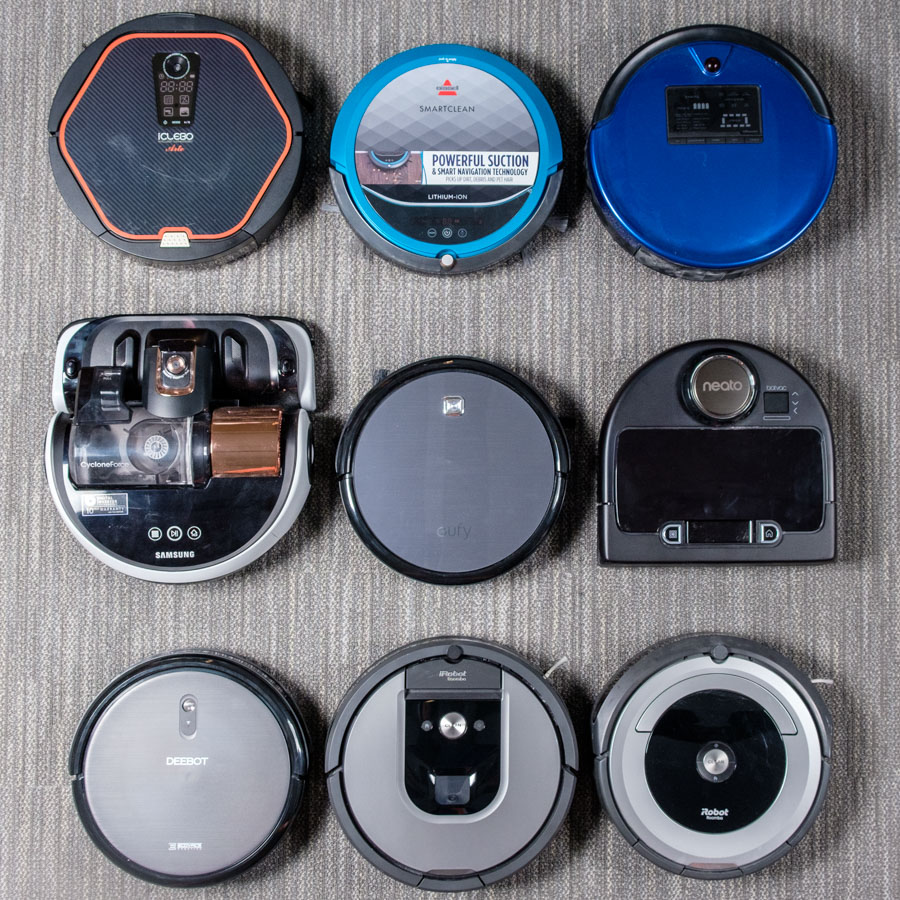
Then we hit the start button
We wanted to assess the robovacs in terms of cleaning ability and navigation skills, as well as general ease of use. So we first ran our favorites through an in-house obstacle course and then planted them in the homes of testers.
Controlled testing
To directly compare the bots’ movements and cleaning abilities, we set up a room with plenty of tricky furniture and mounted a camera for observation. Then we sprinkled a pound of baking soda across the low-pile carpet and gave each vacuum 30 minutes to clean up. We measured cleaning success by weighing their dustbin contents.
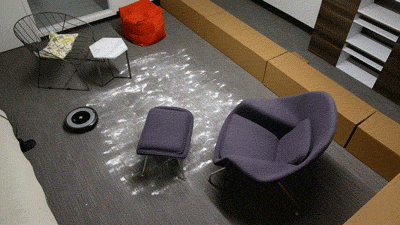
Since 30 minutes is only a fraction of a bot’s typical cleaning cycle, we didn’t expect to get a total clean — particularly not from the ones that operate in random movements. Of the 16 ounces of baking soda deposited each round, the robovacs collected between 1 and 6 ounces. We learned that in terms of cleaning power, you get what you pay for: The amount of collected baking soda scaled up with each price jump. The Roomba 960 and Samsung Powerbot led the pack, with Roomba 690 close on their heels.
We also learned there’s a reason robovac manufacturers don’t recommend totally ditching your upright vacuum. Even the iRobot Roomba 960, which easily outperformed all the other bots by collecting 5.9 ounces of baking soda, paled in comparison to the efficacy of an upright vacuum. We ran the Oreck XL Classic, our favorite carpet vacuum, over its own pound of baking soda; it gathered twice as much baking soda in a fraction of the time.
Clearly, there are limitations to robovac efficacy, but it helps when they don’t fritter away their battery life stuck behind a chair. In our test room, most of the bots managed to mount themselves on the base of a particularly awkward piece of midcentury modern furniture. How they dealt with that obstacle varied widely: The Roomba 960 further proved its mettle by powering over the small, metal bars; the Eufy Robovac 11 got stuck, but eventually (eventually) freed itself; the Ecovacs Deebot N79 beeped for human help. The Neato Botvac Connected couldn’t handle the stress and returned to its dock instead.
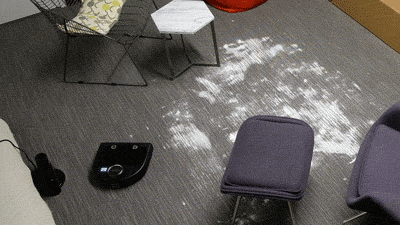
Navigation and cleaning power weren’t spectacular for any of them save the Roomba 960, but, to be fair, we deliberately made the course difficult. If a bot could pass our test, we’d feel comfortable recommending it for home use. The average living space, particularly one arranged for maximum robovac coverage, wouldn’t pose as many problems and would consequentially receive a better clean.
We had clear winners: The Roombas swept the competition with superior suction, navigation, and learning abilities that bested most other models. They spent the most time actually cleaning up baking soda and the least time butting up against the furniture.
Of course, robot vacuums won’t be cleaning in controlled environments, so we threw them into the real world to find out which were the most intuitive to use and the most well-behaved. Would they be able to coexist peaceably alongside curious cats, unexpected spills, and stray socks? Could they clean up things other than baking soda?
We also reached out to customer service
In-home testing
We sent bots to different home styles according to their strengths: Cheaper models went to single-level apartments with little variation in terrain, while spendier bots that claim to climb rugs with ease found homes with lots of changes in topography. Since pet hair is a major concern for most, we wanted bots of all categories to face off against a flurry of fur.
In general, our testers found their bots to be tenacious cleaners. While cleaning patterns ranged from methodical to loopy, most floors were clean after enough passes. That said, we weren’t surprised to hear the bots that lacked rational navigation ended up cleaning less thoroughly. One tester reported that her bot seemed to “love certain corners … and totally disregard others.”
And that isn’t the only outcome of poor navigation. Bots, particularly budget bots, clean via exploration, so they often land themselves in tight spots. Without effective sensors or learning abilities, getting out of those tight spots can be agonizing.

We didn’t find fault with a robovac for spending a couple minutes trying to find its way out from under a bed — it’s probably pretty dusty under there, anyway. But we were concerned that erratic movements and lots of dead ends made for an unequal clean. A poorly engineered bot can exhaust half its battery fighting impasses. If you aren’t home to rescue a stuck bot, it’s probably spending its cleaning cycle jailed between chair legs.
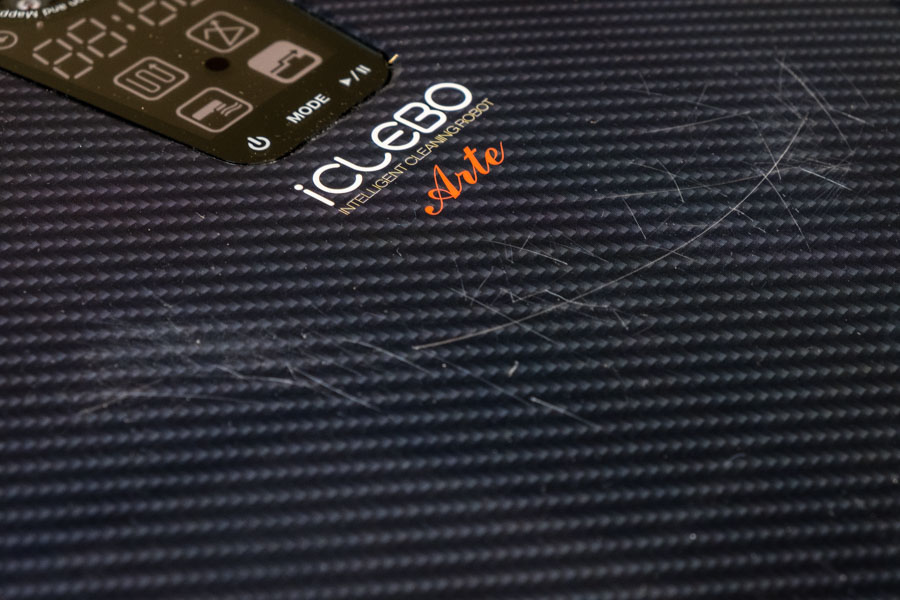
Some of our bots thoroughly underwhelmed us in this stage. The Bissell SmartClean (budget) and iClebo Arte (midrange) disappointed testers by refusing to pick up larger particles and by inflicting a fair amount of damage on themselves and on furniture. The bObSweep Bob Pethair Plus got stuck three times while transitioning to low pile carpet. And all three presented major difficulties when it came to cleaning their parts. Their roller brushes proved impossible to remove sans tool kit, meaning we spent a lot of time attempting to pry off tightly wound coils of Pekingese hair with an X-Acto knife.
Our Picks for the Best Robot Vacuum
Best Overall
iRobot Roomba 690Smart navigation, app control, and powerful cleaning without breaking the bank.
iRobot is without doubt the robovac industry leader, and with its Roomba 690 model, you get the company’s superior technology and reliable customer service, as well as WiFi connectivity, all at an accessible price. It came in a close third out of all robovacs in the baking soda tests, collecting just barely less than the Samsung Powerbot — a luxury bot that costs about three times as much.
The 690 may not fall into the luxury category in terms of price, but it’s hard to pin down any other reason why it wouldn’t qualify. In addition to its powerful and well-designed cleaning system, the tech features are second to none. Use the app to start a cleaning cycle while you’re away from home and then monitor its progress — it draws a map of your home’s layout as it cleans. The sleek and functional HOME app allows you to start, stop, and change cleaning modes with a couple taps. It also sends push notifications for any of the above, as well as when it gets stuck or runs out of battery and has to return to its dock.
While Roombas are exceptionally capable of managing terrain changes, the 690 does have the tendency to bump into furniture at full speed. While this could be an issue for living spaces with lots of spindly furniture, during our in-house testing, we were just impressed with its tenacious forward motion. Rather than languish in tight spots, the 690 either powered through or powered back out. The result: Both the Roombas we tested spent a lot more time actually cleaning instead of dancing around dead ends.
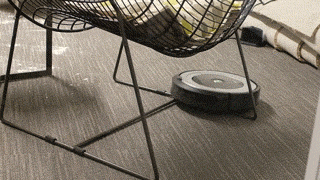
Robovacs in general take a lot of cleaning responsibility out of human hands, but sooner or later, you will have to clean your robovac. (It will probably be sooner — after two cycles max.) Fortunately, the Roomba 690’s design makes cleaning a cinch: Access the bristle and beater (rubber) brushes by lifting a wire hatch and popping them out like two toilet paper holders. Since you’ll find the majority of caught hair where the brush nestles into its slot, being able to easily remove them is a big plus. But be sure to put all its little pieces back together properly: We once ran the 690 mistakenly thinking the filter was fully in place; during that run it kept spitting the debris it gathered back out onto the carpet in a fine dust. The lesson? Make sure the filter is firmly locked in place before running your Roomba.
For a first foray into the wonders of robotic cleaning, or to keep up with light vacuuming in a simple apartment, the iRobot Roomba 690 has you covered. It lacks the stamina and restart functionality that makes the 960 an excellent whole-home cleaner, but for few rooms and thin to normal carpeting, the 690 allows you to give your manual vacuum much longer naps.

It took a few retests (due to an improperly installed filter), but the Roomba 690 took third place in our controlled tests.
Best Upgrade Robot Vacuum
iRobot Roomba 960The most thorough cleaning we tested, plus app control, zoning ability, and "recharge and resume" technology.
This is it — the robovac that blew away the competition with powerful cleaning, smart scouting, and tech benefits galore. The $700 price tag makes it an investment, but after witnessing the Roomba 960’s robust abilities, we started to think it was a reasonable asking price. Especially given the higher price points of comparable models.
At-home testers loved that it went from fresh-out-of-the-box to up-and-running in a few simple steps. The iRobot HOME app is easy to download and master, and syncing Roomba with Alexa is a breeze. Testers also appreciated how it cleaned in a grid-like pattern (“Like a spreadsheet,” one reported), leaving those coveted fresh vacuum tracks.
All Roombas from the 600 series upward boast iRobot’s patented three-stage cleaning system (agitate, brush, suction) and dirt-detection sensors, enabling them to identify high-soil areas and target their cleaning efforts. But the 960 utilizes both optical and acoustic sensors to locate and tackle concentrated messes, and we saw this skill in action. While other bots wasted a lot of time wedged in corners and butting up against furniture, the 960 located the massive baking soda spill at the center of the floor and relentlessly pursued the mess. It naturally ended up gathering the largest amount of baking soda of all the contenders (5.9 ounces) — managing to get over a third of the powder in less than half its standard run time.
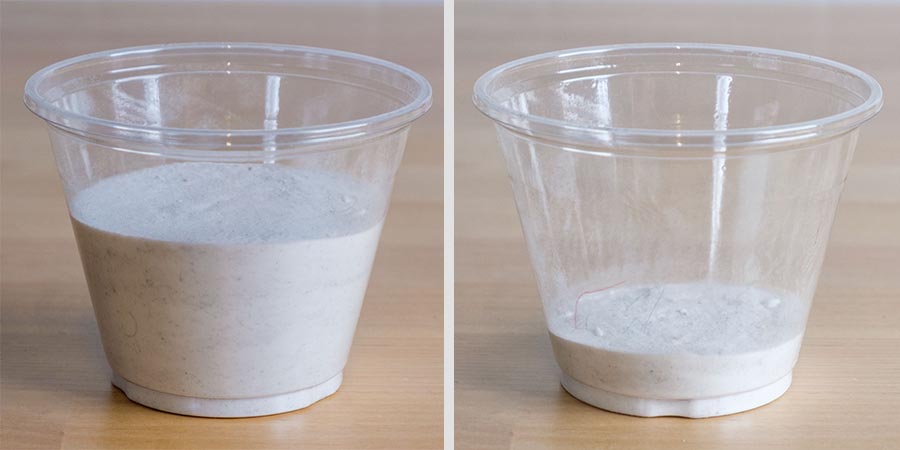
The Roomba 960 cleaned up in our test course, collecting 5.9 ounces of baking soda (left). The Neato Botvac Connected called it quits partway through and came away with just 1.3 ounces (right).
We loved how the Roomba 960 overcame obstacles during controlled testing, but that same relentlessness had unexpected consequences for at-home testers: In one scenario, the 960 got ahold of a lamp cord and ended up pulling the entire lamp off the table.
The 960 is both a deluxe robot vacuum and a comparative bargain. Our other finalist in that category, the Samsung Powerbot, came in a close second in every comparison but is advertised at $300 more. However, the Samsung does boast clear error messaging, longer battery life, and a semi-angular shape that helps it to get into corners. While protruding, whisker-like brushes solve some of the shortcomings of circular bots, models like the Powerbot that feature one or more straight edges have a better chance of getting dusty crevices.

The Roomba 960 spent less time struggling with obstacles and managed to collect the most baking soda in our test.
Did You Know?
The robots are taking over… household chores.
So you’ve already relinquished vacuuming to a robotic helpmate and are eager to hand over more jobs? While not quite the humanoid robots we once imagined would populate the 2000s, bots can tackle a growing number of tasks: mopping, pool cleaning, window washing, lawn mowing… even grill cleaning.
What’s in a name?
During our research, we found that Amazon reviewers talk about their bots “Rudy” or “Ding Dong” and then quickly explain, “Hey, you have to name him.” We thought this was silly at first, but once we had our own bots scuttling about our office, we could see where the emotional attachment came from.
Don’t throw out your manual vacuum just yet.
Robovacs are not intended to wholly replace manual vacuuming. The best they can do is elongate the time between human vacuuming sessions — especially helpful in households with pets and their endless shedding, or kids and their endless spilling. As we mentioned before, our top upright carpet vacuum picked up over 80 percent of the baking soda in just four minutes, while the Roomba 960 only managed to get 37 percent in half an hour.
What about the Dyson 360?
While most super-expensive robot vacuums have power equal to their price, some disappoint. The Dyson 360 — a stately robovac made by the knight of vacuums, Sir James Dyson — is as tall as a four-layer cake, and, despite its four-digit price, is reported to be an inept cleaner, a clumsy mover, and too darn tall to fit under areas that truly need vacuuming. This is a surprising failure, not only because Dyson is a leader in vacuum technology, but also because it was among the first companies to develop a robovac prototype back in the ‘90s.


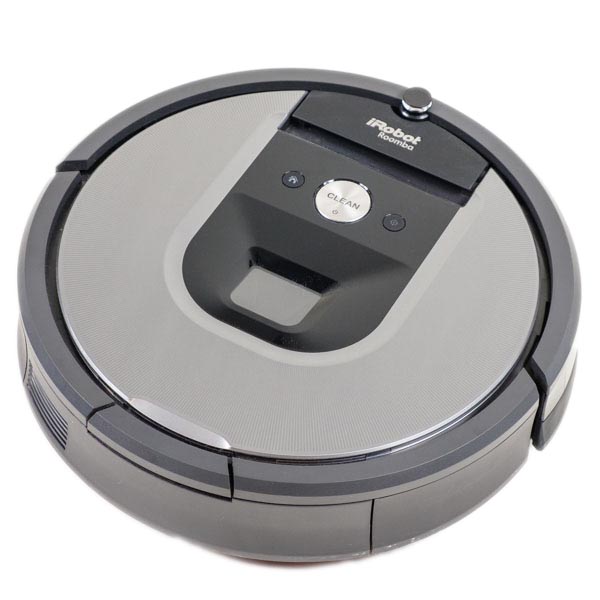

No comments:
Post a Comment